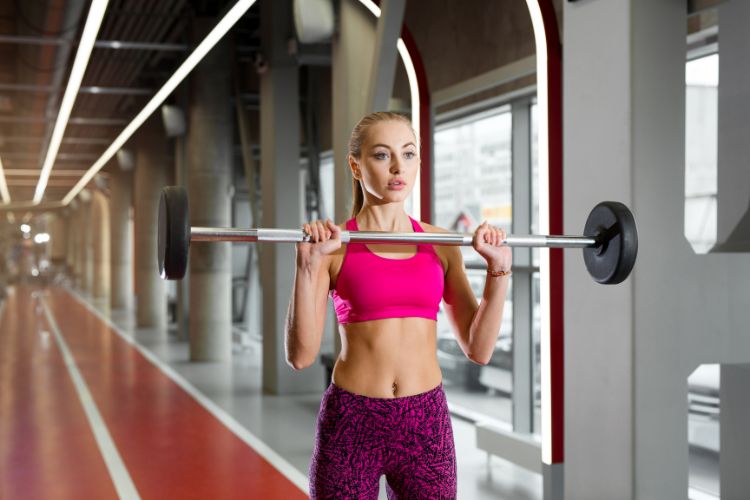Sign up for workout ideas, training advice, reviews of the latest gear and more.






Achieving a balanced, strong, and fit body often comes down to one fundamental approach: full-body workouts. Whether you’re a beginner or an experienced lifter, full-body routines offer a structured, efficient, and effective way to train multiple muscle groups in one session. This blog post will walk you through a comprehensive full-body workout routine, its benefits, and tips for getting the most out of your sessions.
Full-body workouts allow you to hit all major muscle groups in one session, which makes it an excellent choice for people with tight schedules. Instead of isolating specific muscle groups across multiple days, you can streamline your routine and make the most of your workout time.
With a full-body workout, you’re engaging various muscle groups in each session. This can help reduce the risk of muscular imbalances and ensure a well-rounded development of strength, which is essential for both athletic performance and overall functional fitness.
Full-body workouts are typically performed 2-3 times per week, allowing ample recovery time between sessions. This is especially helpful for beginners, as it prevents overworking specific muscle groups and supports gradual progression.
To build a successful full-body workout routine, it’s essential to include exercises that target all major muscle groups. The following routine is designed to build strength, endurance, and flexibility.
Before diving into the workout, begin with a proper warm-up to prevent injury and prepare your body for movement. A simple warm-up could include:
Sets: 3 | Reps: 12-15
Squats are a compound exercise that targets the glutes, quads, and hamstrings. By engaging multiple muscle groups, squats also strengthen your core and improve balance.
Sets: 3 | Reps: 10-12
Deadlifts work the lower back, glutes, hamstrings, and core. They’re essential for building functional strength.
Sets: 3 | Reps: 12-15
Push-ups are a classic bodyweight exercise that strengthens the chest, shoulders, and triceps. They’re a versatile addition to any full-body workout routine.
Sets: 3 | Reps: 10-12
Rows target the back muscles, shoulders, and arms. Dumbbell rows are a great option for adding resistance to this movement.
Sets: 3 | Reps: 12 per leg
Lunges help develop strength and stability in the legs and glutes.
Sets: 3 | Hold Time: 30-60 seconds
Planks are excellent for building core endurance and overall body stability.
Sets: 3 | Reps: 10-12
Shoulder presses work the shoulder muscles and upper arms, helping build a balanced upper body.
A solid full-body workout routine can be structured in various ways to keep things fresh and effective. Here are two common options:
Perform each exercise consecutively with minimal rest between exercises. After completing all exercises, take a 1-2 minute rest before repeating the circuit 2-3 times.
Complete all sets for one exercise before moving on to the next. This allows for a focused approach on each movement and may be more suitable for beginners who need more rest between exercises.
Full-body workouts involve large muscle groups, leading to a higher calorie burn compared to isolating exercises. This makes full-body routines particularly effective for those with weight loss goals.
Because full-body workouts utilize compound movements, they mimic real-life actions and improve functional strength. This is beneficial for everyday tasks, sports, and overall physical resilience.
Full-body workouts stimulate the release of growth hormone and testosterone, which are crucial for muscle growth and repair. By engaging multiple muscle groups, you encourage greater muscle activation, supporting strength gains and lean muscle development.
Full-body workouts should be performed consistently, typically 2-3 times per week. This frequency allows for recovery between sessions while still keeping up with a solid training schedule.
Maintaining proper form is essential, especially with compound movements like deadlifts and squats. This not only prevents injury but also ensures you’re effectively targeting the intended muscle groups.
As you get stronger, aim to increase the weight or resistance to keep challenging your muscles. Progressive overload is vital for continued strength and muscle gains.
While full-body workouts are great for strength and endurance, adding cardio and flexibility exercises can further enhance your fitness. Aim for at least one cardio session and a few stretching sessions each week.
To help you get started, here’s a sample weekly full-body workout plan that you can follow.
A well-rounded full-body workout routine can provide significant strength, endurance, and health benefits. By structuring your workout to include compound exercises, focusing on proper form, and progressively increasing resistance, you can achieve balanced muscle development and overall fitness.
Remember, the best workout routine is one that fits your lifestyle, goals, and preferences. So, start with this guide, modify as needed, and stay consistent for the best results!
Stay up to date on the latest women’s health, fitness and lifestyle trends and tips.